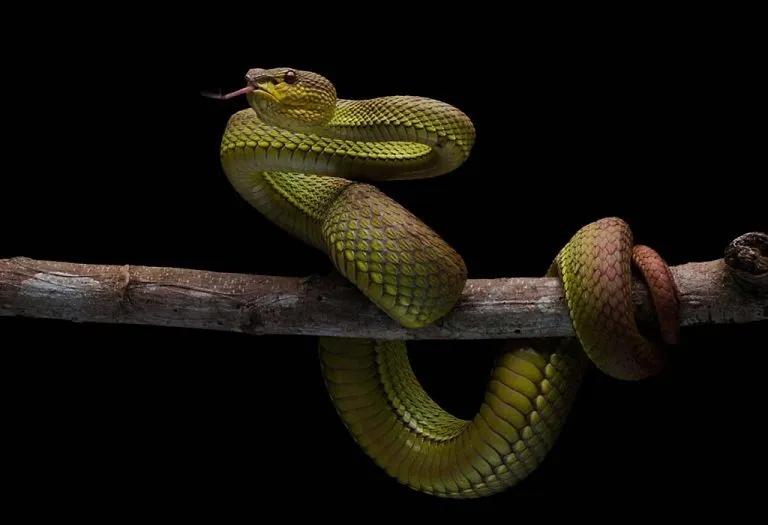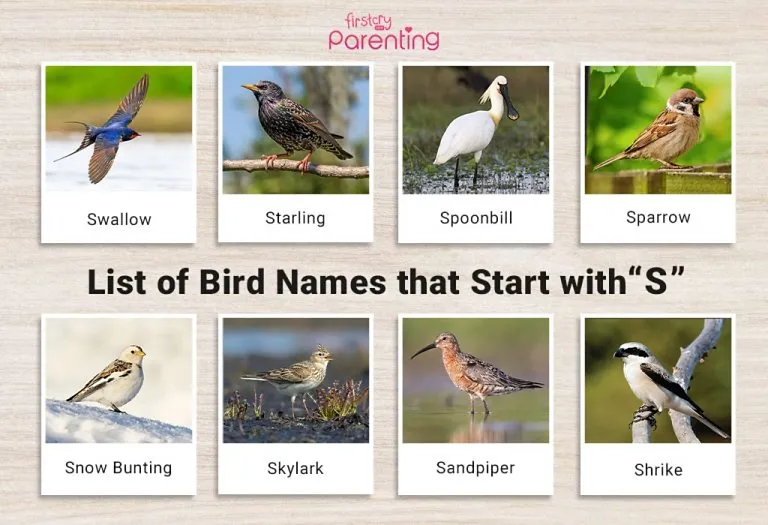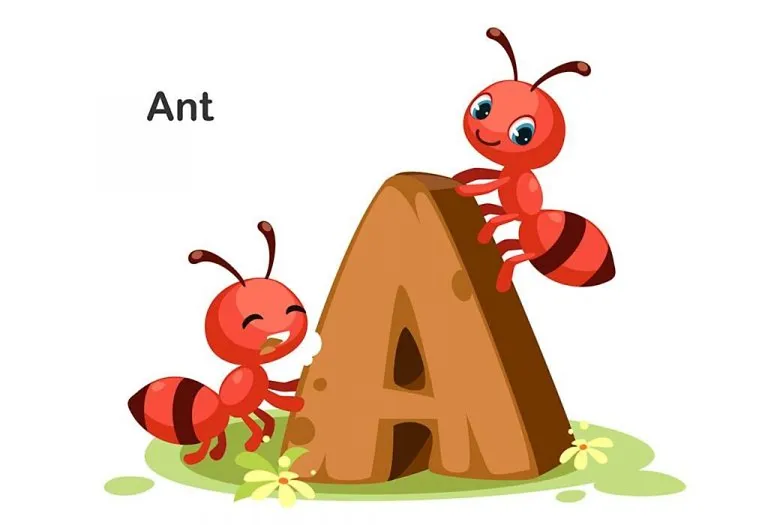20 Fascinating Snake Facts and Information for Kids
- What Are Snakes?
- What Do They Eat?
- Where Do They Live?
- Which Are the Largest and Smallest Snakes in the World?
- 20 Amazing Facts About Snakes for Children
- FAQs
One of the most interesting reptiles around us, snakes tend to inspire fear as well as excitement in anyone who sees them. When getting more information on rattlesnakes or pythons, understanding what separates them and what makes them the same is essential to create an interest in snakes within children. These creatures come in various sizes and colors; each adapted to its environment in unique ways. Some fascinating snake facts for kids can help dispel myths and work towards conserving them. Learning about how they move, hunt, and survive in different climates can make children more curious and appreciative of these remarkable reptiles.
What Are Snakes?
Snakes are long, thin animals with no legs, covered in scales that help them move smoothly. They come in many different sizes and colors, and some can even swim! Snakes have special tongues they use to smell the air and find out what’s around them. Instead of blinking, snakes have clear scales over their eyes to protect them. They shed their old skin as they grow, revealing new, shiny skin underneath. Even though some people are scared of them, most snakes are harmless and important to nature.
What Do They Eat?
Snakes eat a variety of animals, depending on their size and species. Most snakes are carnivores, which means they eat meat. Some common foods include mice, rats, birds, frogs, and lizards. Larger snakes, like pythons, can even eat bigger animals like deer or pigs. They swallow their food whole because they don’t have teeth for chewing. Some snakes, like cobras and rattlesnakes, use venom to catch their prey, while others, like constrictors, squeeze their food tightly until it stops moving before eating it.
Where Do They Live?
Snakes live in many different places around the world, except for very cold areas like Antarctica. They can be found in forests, deserts, grasslands, mountains, and even in water. Some snakes, like tree snakes, live high up in the branches, while others, like ground-dwelling snakes, live in burrows or under rocks. Water snakes and sea snakes are adapted to live in lakes, rivers, and oceans. Snakes are good at finding hiding spots and can adapt to different environments to stay safe and find food.
Which Are the Largest and Smallest Snakes in the World?
The largest snake in the world is the green anaconda, which can grow up to 30 feet long and weigh over 500 pounds. It lives in the swamps and rivers of South America.
The smallest snake in the world is the Barbados thread snake, which is only about 4 inches long and as thin as a strand of spaghetti. It is found on the Caribbean island of Barbados.
These two snakes show the amazing range of sizes that snakes can be!
20 Amazing Facts About Snakes for Children
Understanding the facts and different kinds of trivia about snakes can help you stay more informed and even get excited about them, whether you’re looking to have pet snakes or not. Here are some amazing facts about snakes for kids.
1. There are nearly 3000 varieties of snakes
Some of them are long, some of them are short, some are multi-colored, some are pitch black. But most importantly, some can be venomous while some are totally harmless.
2. Snakes are deaf and cannot hear sounds
Snakes don’t have ears at all. Snakes stay close to the ground and slide flat to it as much as possible. This is because they sense and judge the movement through vibrations on the ground, using their jaws.
3. Most poisonous snakes have bright colors
The bright colors are a great warning sign for any kind of predator to instantly realize that this snake could be poisonous and can kill them if they bite. However, a few non-venomous snakes have this quality and have bright colors on their scales, too. This fools the predators and keeps them safe.
4. Snakes live longer in zoos than in the wild
One of the most interesting pieces of snakes information for kids on the internet to note is that snakes live longer in captivity and grow larger as well. An anaconda in South America has lived for nearly 28 years. Some anacondas are known to grow up to as long as 38 feet and can weigh upwards of 120 kg.
5. Snakes eat only when they feel hungry
Many snakes have different times when they feel hungry. Some can eat every 2-3 days, while others eat once in two weeks or even once a month. It all depends on their physical activity, which is why snakes in zoos tend to eat only a few times in the entire year.
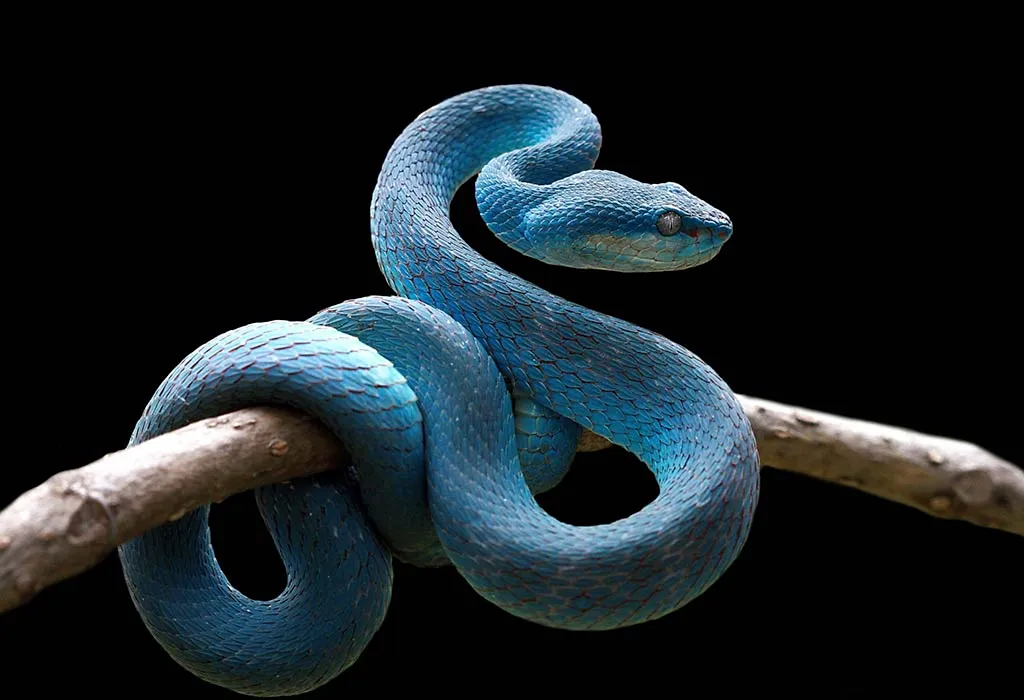
6. Snakes can swallow large prey easily
Most snakes have around 200 teeth that allow them to chew their food. The muscle tendons around their jaw allow them to open their mouth to eat something that is more than 3 times larger than them. Thus, they bite their prey and hold on to it, while slowly swallowing it down.
7. Snakes don’t take a bath
The skin of snakes is made of scales that are placed together so intelligently that dirt barely catches on to them. Therefore, they don’t tend to take a bath as such. On regular occasions, they do get rid of their skin to be replaced with a new one.
8. Snakes help keep pests away
One of the important python facts is that snakes like these end up eating rats, rodents, and other animals as well as insects that tend to destroy and ruin crops. Therefore, having a snake around is actually beneficial to many farmers and adjoining areas.
9. Snakes are extremely speedy
With their slender and agile bodies, snakes can slide quickly from one point to another. The black mamba, one of the most dangerous snakes, is known to slither at a speed of nearly 12km/hr.
10. A few snakes can fly as well
Okay, snakes don’t fly like birds, but they can flatten their bodies to trap air under them, allowing for a gliding movement when they fall from a height. Many snake species tend to do this.
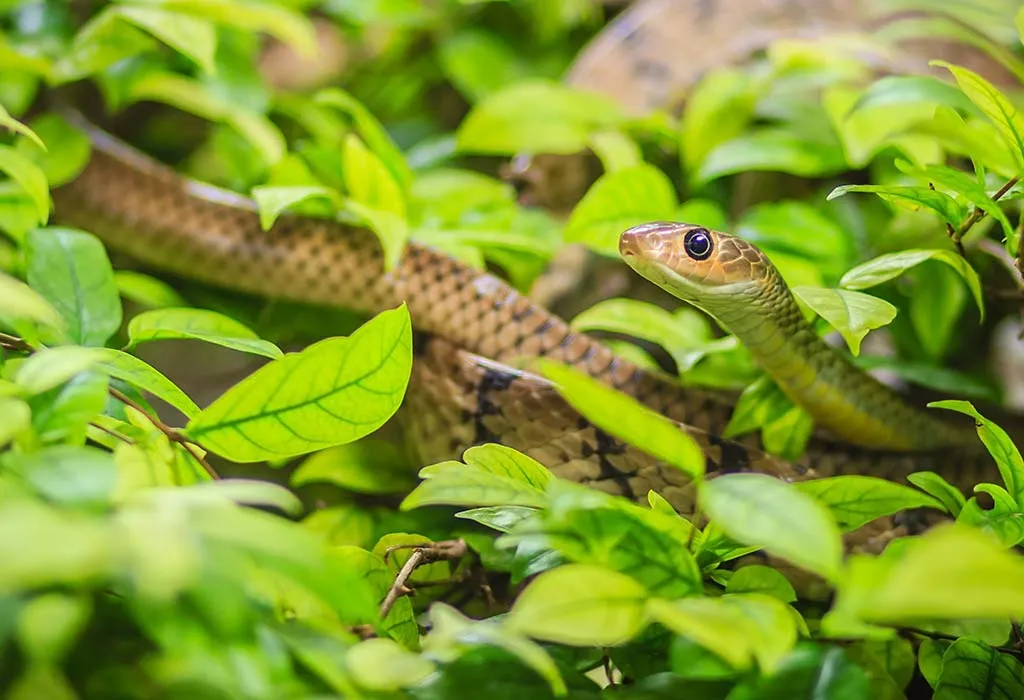
11. A snake’s venom has multiple purposes
The snake uses its venom while hunting in order to paralyse its prey or kill it making it easy for eating the food. But if the venom is extracted, then scientists can use its properties to make life-saving medicines as well.
12. Snakes have heat vision
Although some snakes have eyes, they cannot see properly even in the day. Therefore, they make use of tiny holes in front of their mouth to sense the heat around them, allowing them to hunt even in the night.
13. Snakes don’t have noses
Although they rely on the sense of smell, snakes don’t have noses. Their tongues, however, can pick up chemical molecules from the air and analyze them to understand their environment better.
14. Sea snakes breathe through their skin
Amongst the fun sea snake facts for kindergarten kids, one of the most interesting ones is their ability to breathe underwater. They can do this partially through their skin, which allows them to hunt for prey for a longer time.
15. Snakes respond to movement and not sound
If you’ve seen a snake charmer, the music is just a distraction for the audience. The snake actually moves to the movement of the instrument and not the music.
16. Some snakes give birth to live young
While most snakes lay eggs, some species, like the boa constrictor, give birth to live young. These baby snakes are fully formed and ready to survive on their own right after birth.
17. Snakes shed their skin multiple times a year
As snakes grow, they shed their old skin to make room for new, larger skin. Depending on the species and their age, they can shed several times a year.
18. Snakes don’t blink
Snakes do not have eyelids, which means they cannot blink. Instead, their eyes are covered by a clear scale called a spectacle that protects them from dirt and injury.
19. Some snakes can survive in freezing temperatures
Certain snake species, like the garter snake, can survive in extremely cold environments. They enter a state of hibernation, slowing down their body functions until temperatures rise again.
20. Some snakes use camouflage to hide
Many snakes have colors and patterns that help them blend into their surroundings, making it easier for them to hide from predators and sneak up on prey. This camouflage can include spots, stripes, or earthy tones that match the environment they live in.
FAQs
1. Can snakes change color like chameleons?
While snakes cannot change color in the same way that chameleons do, some species can slightly alter their coloration due to temperature or mood. For example, the eastern hognose snake may change shades when it feels threatened, but these changes are not as dramatic or intentional as a chameleon’s.
2. Do snakes have a social life?
Most snakes are solitary creatures, but some species, like garter snakes, have been observed gathering in large groups during mating season or when hibernating. These social gatherings can sometimes consist of hundreds of snakes coiling together in one spot.
3. Can snakes recognize their owners?
While snakes do not have the same capacity for recognition as pets like dogs or cats, they can become familiar with their caretakers’ scents and may learn to associate them with feeding times. Some snake owners report that their pets seem to react differently when they see their owner compared to other people.
Putting together some interesting king cobra facts for kids and even about other varieties of snakes helps your children dissolve the fear around the species and look at them from a scientific perspective. Snakes are animals in their own right and deserve to be cared properly, too.
References/Resources:
1. Awesome 8: Super snakes; National Geographic Kids; https://kids.nationalgeographic.com/nature/article/super-snakes
2. Snake; Britannica; https://www.britannica.com/animal/snake
3. List of Snakes; Britannica; https://www.britannica.com/topic/list-of-snakes-2032997
4. Goiran. C, Shine. T, Shine. R; The banded colour patterns of sea snakes discourage attack by predatory fishes, enabling Batesian mimicry by harmless species; the Royal Society Publishing; https://royalsocietypublishing.org/doi/10.1098/rspb.2022.1759; November 2022
5. Luiselli. L, Sale. L, Akani. G, Amori. G; Venomous Snake Abundance Within Snake Species’ Assemblages Worldwide; MDPI; https://www.mdpi.com/1424-2818/12/2/69; February 2020
Astounding Dinosaur Facts for Kids
Interesting Dog Facts for Children
Horse Facts and Information for Children
Information & Facts About Blue Whale for Kids
Was This Article Helpful?
Parenting is a huge responsibility, for you as a caregiver, but also for us as a parenting content platform. We understand that and take our responsibility of creating credible content seriously. FirstCry Parenting articles are written and published only after extensive research using factually sound references to deliver quality content that is accurate, validated by experts, and completely reliable. To understand how we go about creating content that is credible, read our editorial policy here.






